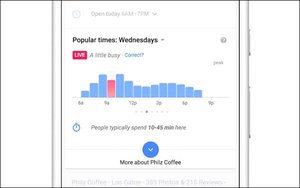by Laurie Sullivan@lauriesullivan, November 22, 2016

As U.S. shoppers search for products online and U.S. retail marketers continue to ramp up campaigns preparing for the Black Friday and Cyber Monday holiday buying season, Google has been busy creating measurement tools to track live performance.
Distance and location reports track where in-store visits originate and the types of ads marketers should create. Whereas distance reporting shows store visits based on the distance between the consumer and the store they want to visit when people search online, store visits performance will show geographic and user location.
Performance data in the brand’s AdWords account can help marketers to identify the geographic areas to determine where to focus advertising efforts and budgets. What triggered the ad geographically can be determined, and then the consumer can be served ads for products in which they showed interest in through searches.
If the data suggests that store visits are highest within one mile, marketers can apply targeting around that specific radius. The marketer can then set higher bids for nearby consumers and serve custom ads like “50% off in-store with holiday doorbuster deals until noon.” Store visits distance reporting is available now for Search campaigns, and will roll out to Shopping campaigns soon.
Store visits performance is also coming soon to geographic and user locations reports, allowing marketers to see the geographic areas that drive the most ad clicks that result in a store visit. Marketers can use the data to determine whether budgets in those areas should increase.
Foot traffic typically remains heavy in the afternoon, according to Google’s data. The company also updated its ability to tell searchers when a store has the most foot traffic in real-time. The company updated its Popular Times features added to Google Maps in July 2015. It’s now a live feed. The Live tags allows Google Maps to display a red overlay on top of historically busy times to analyze foot traffic in the store or restaurant.
Google says that Black Friday store foot traffic in 2015 typically peaked in the afternoon between noon and 4 p.m., but people search and shop all day long from smartphones.
MediaPost.com: Search Marketing Daily
(25)